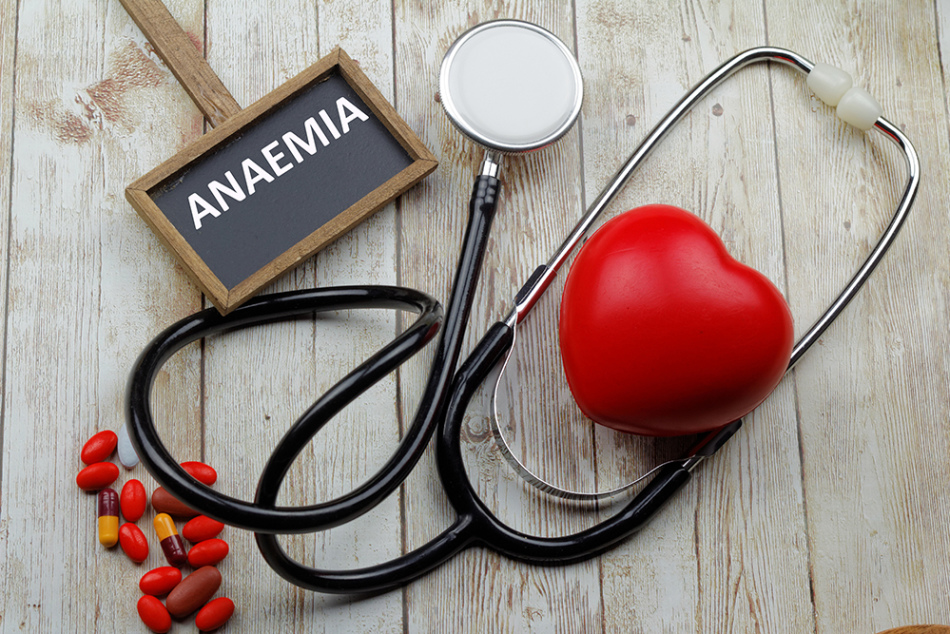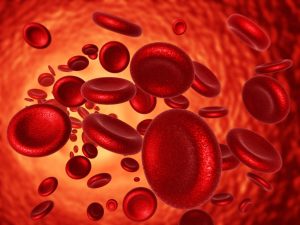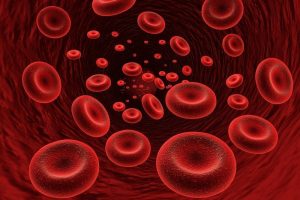Anemia: symptoms, degrees, treatment

Anemia, or anemia, is a condition in which the concentration of hemoglobin (oxygen carrier) in the blood decreases. Often accompanied by a decrease in the number of red blood cells (red blood cells). It is not an independent disease, but a syndrome of other diseases.
Anemia in women is diagnosed if hemoglobin falls below 120 g / l (during pregnancy – below 110 g / l), and in men, if the indicator drops to 130 g / l.
With anemia, cells and tissues do not receive enough oxygen, which leads to disruption of the functioning of internal organs, contributes to the development of other diseases.
Types of anemia
Depending on the cause, 4 groups of pathology are distinguished:
Deficiency anemia – occurs when there is a lack of substances involved in the process of hematopoiesis.
Post-hemorrhagic anemia – caused by acute or chronic blood loss.
Hemolytic anemia is the result of a reduction in the life span of red blood cells due to increased destruction.
Hypoplastic, or aplastic, anemia (the most severe form) – develops when the hematopoietic function is impaired due to the weakening of the ability of the bone marrow to synthesize blood cells (erythrocytes).
There are several types of deficiency pathology:
Iron deficiency anemia (most common). It occurs when there is a lack of iron in the body, which is part of hemoglobin.
B12 deficiency anemia. It manifests itself with a deficiency of vitamin B12, which is necessary for the maturation of red blood cells and the proper functioning of the nervous system.
Folic acid deficiency anemia. It develops with a lack of vitamin B9 (folic acid) as a result of its insufficient intake into the body or excessive excretion.
The most common forms of hemolytic anemia are:
Thalassemia. The rate of hemoglobin synthesis decreases. In addition, it is incompletely formed, becomes unstable, gives the erythrocytes a target-like shape.
Sickle cell anemia. Defective hemoglobin is synthesized in the body, due to which the erythrocytes acquire a sickle-shaped appearance. They destroy each other with sharp ends, increase blood viscosity, clog capillaries.
The type of anemia is determined by a physician or hematologist based on blood tests.
Symptoms of anemia
Signs of pathology depend on its type and severity. The mild form is often asymptomatic. General weakness, increased fatigue, and weakening of attention are possible. In severe cases (with a decrease in hemoglobin below 50 g / l), acidosis (blood acidification) and heart failure may develop.
Common symptoms that accompany all types of anemia include:
headache, dizziness;
flying “flies” before the eyes;
noise or ringing in your ears;
increased heartbeat, shortness of breath;
dryness, peeling and pallor of the skin;
decreased muscle tone;
sudden mood swings, irritability;
general weakness, drowsiness;
decreased performance, fatigue.
The iron-deficient form is characterized by the presence of cracks and seizure in the corners of the mouth, cross striation, stratification and fragility of nails, section and hair loss, distortion of taste preferences (desire to eat chalk, earth), lowering blood pressure, fainting.
With B12-deficiency anemia, a person feels tingling and numbness in the fingers, a feeling of crawling, stiffness and swelling of the limbs, the skin becomes yellowish, and the tongue becomes crimson, the gait becomes wobbly.
With aplastic anemia, stabbing pains occur in the chest region, physical efforts are accompanied by shortness of breath. Small hemorrhages (petechiae) appear on the skin in the form of a red rash, gums bleed, menstruation becomes prolonged and profuse.
With folate deficiency, chewing and swallowing food becomes difficult, the mucous membranes of the gastrointestinal tract atrophy, and intolerance to acidic foods develops.
With post-hemorrhagic anemia, the head is spinning, the pressure and body temperature decrease, the pulse becomes more frequent (but becomes weak), and cold sweat appears. If the bleeding is profuse, then convulsions, coma and even cardiac arrest are possible.
Hemolytic anemia is characterized by yellowness of the skin and mucous membranes, darkening of urine and feces, increased body temperature, an increase in the size of the liver or spleen.
With the hypoplastic form, bleeding of the gums increases, ulcers form in the oral cavity, bruises appear on the skin, tachycardia develops, and you constantly want to sleep.
Degree of anemia
Depending on the level of hemoglobin, 3 degrees of anemia are distinguished:
light – hemoglobin drops to 90-115 g / l;
average – the concentration of hemoglobin is at the level of 70-90 g / l;
severe – hemoglobin drops to 70 g / l and below.
Causes of anemia
Various factors can provoke the development of anemia:
unhealthy diet – a lack of iron-containing foods, animal proteins in the diet;
malfunctions in the functioning of the gastrointestinal tract – a violation of the absorption capacity;
weakening of the production of red blood cells in the bone marrow;
hemolysis – a reduction in the life span of red blood cells due to premature destruction;
loss of blood as a result of injury or chronic bleeding (nose, uterine, gastrointestinal);
exposure to the body of toxic substances (arsenic, benzene) or alcohol;
long-term use of certain medications (antibiotics, cytostatics, nonsteroidal anti-inflammatory drugs);
radiation exposure.
Often, anemia develops when:
pathologies of the kidneys (glomerulonephritis), liver (hepatitis, cirrhosis) and spleen;
chronic infections;
endocrine insufficiency;
systemic diseases (lupus erythematosus, rheumatoid arthritis);
infectious diseases (tuberculosis, leptospirosis, toxoplasmosis, mononucleosis, leishmaniasis, malaria);
diseases of the digestive system (gastritis, colitis, ulcers, Crohn’s disease);
benign and malignant tumors.
The risk group includes vegetarians, donors, professional athletes, and pregnant women.
The main cause of anemia in children is rapid growth, requiring increased nutrition, and imperfect mechanisms of hematopoiesis. As a result, the immune system is weakened, and the susceptibility to infectious diseases increases.
Treating anemia
The doctor selects the method of therapy individually, depending on the cause of the anemia and the severity of the condition.
For iron deficiency anemia, your doctor will recommend including iron-rich foods in your diet. If necessary, prescribe iron supplements.
If anemia is caused by infection or intoxication, then it is necessary to get rid of the causative agent of the disease and detoxify the body.
In post-hemorrhagic anemia, bleeding should be stopped. Additionally, medications are prescribed that normalize blood volume and the number of blood cells. If there is a threat to life, blood is transfused, blood substitutes are injected.
Hemolytic anemia https://en.wikipedia.org/wiki/Hemolytic_anemia is treated with anabolic hormones and glucocorticoids. Vitamins are additionally prescribed. If conservative treatment is ineffective, then they resort to surgery, during which the spleen is removed.
With the hypoplastic form, hematopoiesis processes are stimulated, blood transfusions are performed, and bone marrow transplants are performed.
Sickle cell anemia is treated with an infusion of blood substitutes or red blood cells.